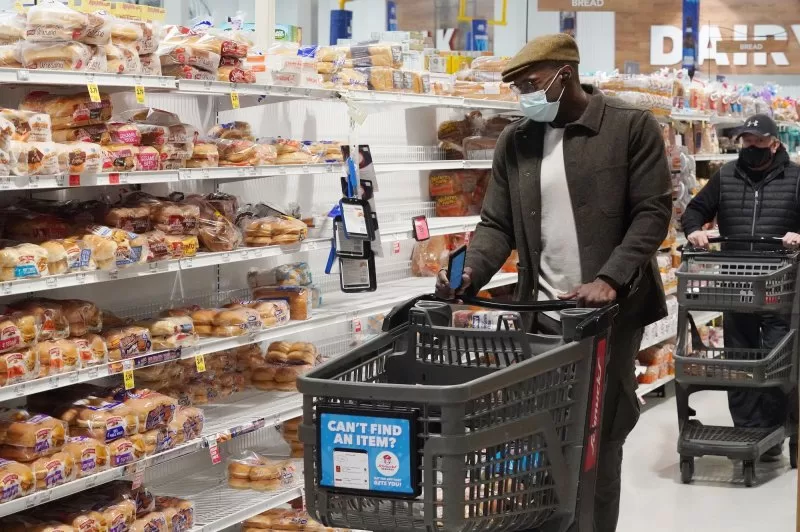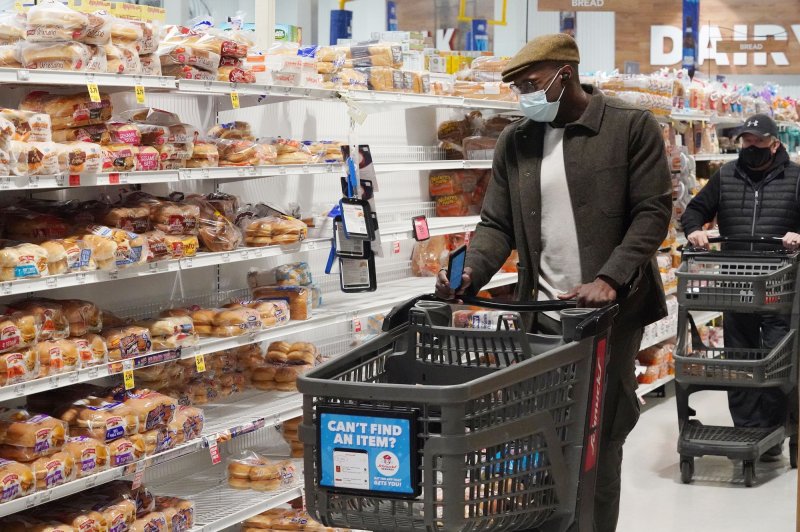States with the highest population gains in recent years generally see higher inflation rates — including the price of food — than those that have relatively stable or negative population growth, according to the U.S. Census Bureau. File Photo by Bill Greenblatt/UPI |
License PhotoApril 17 (UPI) — The nation’s inflation rate rose to 3.5% in March, according to the U.S. Department of Labor, but some states are seeing higher-than-average price increases due to higher rates of population growth.
Growing populations create more demand for housing and food — two of the primary drivers of state-level inflation, according to Moody’s Analytics.
States with the highest population gains in recent years generally see higher inflation rates than those that have relatively stable or negative population growth, the U.S. Census Bureau says.
The bureau reported that the South and the West have had the highest population increases since the end of the COVID-19 pandemic lock-downs, and those regions also have states generally with the highest rates of inflation.
At the top of the list is Florida, which posted the nation’s highest state-level inflation rate of 3.9% over the last year.
Florida also had the nation’s second-highest population increase over the last year, with an influx of 365,205 residents and a growth rate of 1.6%. The Sunshine State’s three-year population increase since April 1, 2020, is 1.07 million, or about 5%.
A call and email seeking comment from Florida Gov. Ron DeSantis‘ administration were not returned.
Tennessee and Virginia posted the nation’s second-highest inflation rate at 3.8%.
Tennessee had an influx of 77,513 residents for a population change of 1.1% over the past year. Its population increase since April 1, 2020, was 215,703, or 3.1%.
Virginia had 36,599 new residents over the past year and 84,325 since April 1, 2020. Those are increases of 0.4% and 1%,respectively.
South Carolina has 3.6% inflation, 90,600 new residents over the past year and 255,133 since April 1, 2020. Those are changes of 1.7% and 5%, respectively, and its growth rate leads the nation.
Rounding out the Top-5 states for inflation is Alabama, which posted an inflation rate of 3.6% and gained 34,565 residents over the past year and 84,174 since April 1, 2020. Those are increases of 0.7% and 1.7%, respectively.
Lowest rate in Pennsylvania
Contrasting the five states with the highest inflation rates, Pennsylvania posted the nation’s lowest inflation rate at 1.8%. That’s nearly half the national rate.
Pennsylvania also has experienced population reductions of 10,408 over the past year and 41,105 since April 1, 2020. Those are population reductions of 0.1% and 0.3%, respectively.
When the COVID-19 pandemic began, the Census Bureau began conducting a periodical Household Pulse Survey of households to gauge how they are affected by inflation and other economic and social factors.
Recent survey results show a generally high level of concern and stress about inflation and how it’s affecting households. The survey shows inflation stress is highest in the South and least in the Midwest.
Inflation stress adds up to budgeting pressure on households as food and shelter costs rise faster than overall prices, according to the Federal Reserve Bank of Dallas.
Inflation stress doesn’t affect all population segments equally, though. It affects low- and middle-income households the most and seniors the least.
The Federal Reserve notes low- and middle-income households are affected the most by inflation stress and budgetary pressure as they spend more of their incomes on food and shelter due to inflation.
Also affected more are Blacks, Hispanics, and younger consumers, who generally have rent, mortgages and other loans to pay.
Despite many seniors having fixed incomes, they are more insulated against inflation, because many own their homes outright. They also are exposed less to interest rates, such as for mortgages and other loans.
Boomers increase spending
Baby Boomers, who were born before 1965, are the only U.S. population segment that has increased spending during the current economy, while younger consumers are reducing their spending.
Many seniors also have more diverse incomes, including rental properties, interest and dividends on investments. Many also can sell homes to downsize and bank the equity they obtain from home sales.
The Federal Reserve has a target of 2% inflation for the nation and is maintaining a key interest rate of 5.25% to 5.5% to lower inflation in all states.
“We continue to make good progress bringing inflation down,” Federal Reserve Chairman Jerome Powell said during a March 20 news conference.
The Federal Reserve committee is confident the nation’s inflation rate eventually will reach the 2% target, Powell said, but the committee won’t lower the key interest rate until economic data shows the target is within reach and likely to happen.
“We continue to make good progress bringing inflation down,” he said. “Too much too soon would cause more inflation, but too late would harm employment.”
Before the recent inflation surge to 3.5% nationally, nine months of about 2.5% inflation occurred, which raised hopes of a rate reduction by the Federal Reserve.
January, February and March showed the nation’s economy is proceeding along a “bumpy road” and delaying an anticipated reduction in the lending rate, Powell said.
Until the economy stabilizes, he said a rate reduction won’t happen.
Moody’s Analytics in 2017 undertook a study of population growth and inflation, which showed a “strong association between population growth” in states and municipalities.
“That population may be an important driver of inflation growth may be relatively underappreciated by economists and policymakers, but it is not unintuitive,” Moody’s Analytics analyst Adam Ozimek said.
He said the primary problem is the limited supply of housing and land. People need housing, and developers need land upon which to build them, but land isn’t something that can be produced in large quantities.
“Land remains a relatively fixed factor in many places, which will generate a less than perfectly elastic housing supply even in the long run, let alone the short run,” Ozimek wrote in the study’s conclusion.

